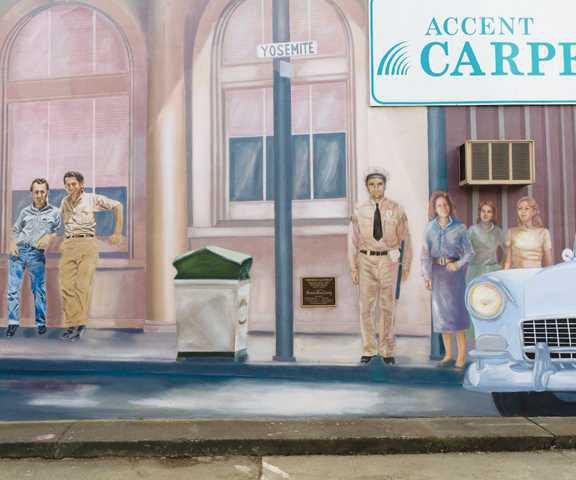No offense to either Manteca or Ripon, but does anyone want to see the two cities become a seamless blob where you can’t tell where one city starts and the other ends?
It is why steps need to be taken now to make sure that doesn’t happen.
If not, the day will come when Manteca-Ripon will be melded together.
Sound far-fetched?
Then consider this: The most plausible next major boom after southwest Manteca, the Airport Way corridor, North Manteca near the Delicato winery, and South Main takes its course is the 1,050 acres encompassing the Austin Road Business Park.
The project is now on ice.
The land, though, has been annexed to the city and has land zoning to accommodate 4,198 housing units — 2,358 single family homes and 1,840 multiple family units — as well as 3.5 million square feet of commercial and 8 million square feet for business park use.
The area abuts against the future city limits of Ripon on its southern and eastern flanks.
Currently, it is designated as being in Ripon’s sphere of influence.
That essentially means it is an area that has a high probability of eventually being annexed to Ripon.
In the north and east of Highway 99, Ripon’s sphere of influence runs to Graves Road — roughly where an eastern extension of the 120 Bypass would go. The western boundary of Ripon’s sphere of influence north of the city is Jack Tone Road.
It is only a matter of time before the dirt is turned to start Austin Road Business Park.
Meritage Homes signaled that as a growing possibility last month when they submitted plans for 310 homes on land they acquired abutting the west side of the “S” on Sedan Avenue to the southeast of Manteca.
This is significant for two reasons.
It is moving infrastructure and urbanization closer to more of the 1,050 acres.
And the land development is not being undertaken by a local group per se.
As the artificial intelligence boom is revamping the Bay Area economy, it will create additional demand for housing in South San Joaquin County.
This will mean more national and regional concerns being involved in laying the foundation to accommodate future growth.
Acquiring and bundling together land and then designing a project and gaining entitlements enhances the value of property immensely.
Those doing that work don’t necessarily build the project. Instead, they may sell to national or regional builders and go from there.
That does not mean local land investors/developers have gone away.
They’re still doing what they have done since the 1970s lining up agricultural land for conversion to urban uses.
Equally important when it comes to jumpstarting the Austin Road corridor to development is the Highway 99/120 Bypass connector work breaking ground this month.
It includes a new four-lane interchange on Austin Road at Highway 99,
When the third phase is done with its elaborate braided ramps for traffic exiting and entering Highway 99 from the north, it will provide the muscular freeway access the area needs to develop attractive housing and business park projects.
It should take the need for a new Raymus Parkway/Highway 99 interchange — midway between Austin and Jack Tone — off the table.
There would be no sound reason from Manteca’s perspective to pursue another interchange.
That’s because the city will need to impose a growth fee on development in the area to cover the $50 million plus tab for the third phase that includes the braided ramps.
And since they are designed to accommodate truck movements, the business park won’t need to be predicated on an additional interchange being built.
As such, the only area the Raymus (or Olive Avenue) interchange would open the development floodgates is Ripon.
The 120/99 project wasn’t on the radar when planners cooked up the need for an additional interchange.
It has clearly changed the dynamics.
That said, there are planners that basically go into death grip mode when anyone suggests not pursuing the additional interchange.
The truth is it would primarily induce growth in areas within Ripon’s sphere of influence,
Previous Ripon leaders helped kill a 1990s proposal to build a second Stanislaus River crossing aligned with Olive Avenue that would have needed an interchange roughly where Manteca proposed the Raymus interchange.
Current leaders, as well as those to follow, need to seize whatever possibility comes their way to erase any plans to build the interchange.
Call it part of the game plan to protect Ripon’s character.
They also would do Ripon a huge favor in the future to work to establish an agricultural easement, if you will, that provides for a permanent half mile or mile wide rural buffer between urbanization in Manteca and Ripon.
It might sound a bit alarmist, but by not taking steps today or on the near horizon, development patterns will eventually undermine part of Ripon’s quality of life.
Wait until the two cities are one development or so away from being connected at any location, and it will be too late.
It doesn’t have to be inevitable.
But it will take planning decisions backed up with teeth now to prevent it from happening.
Other California cities have taken similar steps.
As it is now, Manteca development will put pressure on Ripon schools.
A large segment of southeast Manteca, including some neighborhoods already in place, are within the Ripon Unified School District boundaries.
That means more students in the smaller enrollment elementary schools Ripon residents cherish plus more in their high school as well.
Eventually there may be a Ripon Unified elementary school campus built in Manteca, but that is unlikely to happen for a longtime.
Meanwhile, Manteca growth will overcrowd and change the character of Ripon schools.
Undoing that is now next to impossible.
But what isn’t is making sure Ripon doesn’t eventually lose its standalone identity as has happened to communities in the Santa Clara Valley.
This column is the opinion of editor, Dennis Wyatt, and does not necessarily represent the opinions of The Bulletin or 209 Multimedia. He can be reached at dwyatt@mantecabulletin.com






